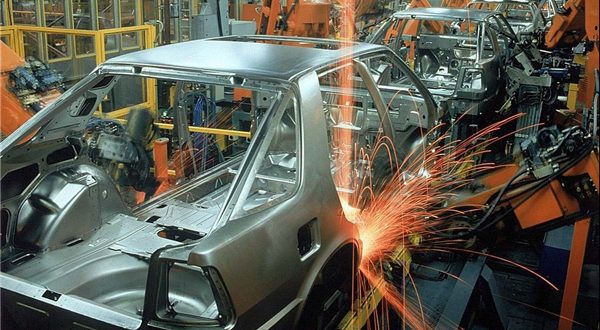The idea of Iran. Turkey and Russia jointly producing cars was first broached by Turkish automakers about two years ago. but it has yet to take off. Najafi Manesh told Asr-e Khodro publication.
“The main reason is that the three countries of Iran. Russia and Turkey are close by with a population of more than 400 million. In addition. the affiliate markets of these three countries are also about 400 million.“ he added.
The plan is to jointly produce a platform as a basis for manufacturing eight to nine models. Najafi-Manesh added.
Turkey has a relatively buoyant auto parts industry. exporting nearly $20 billion worth of motor vehicles and components a year.
The industry. however. is centered on assembling vehicles imported in kit. Major producers such as Fiat. Renault. Ford. Hyundai and Toyota produced more than 1.3 million motor vehicles in Turkey last year.
The Russian automotive industry. on the other hand. is a mixed bag including local brand producers. foreign original equipment manufacturer (OEMs). joint ventures and Russian companies producing foreign brands.
The main local brands are light vehicle producers AvtoVAZ and GAZ. while KamAZ is the leading heavy vehicle producer.
The iconic Lada is the most popular model manufactured by AvtoVAZ but it is owned by the French group Renault. indicating how deep the inroads of foreign automakers are in a country with a long history of progress in the development of machinery.
In February. a senior Russian official said AvtoVaz. the country’s largest automaker. was negotiating the assembly and sale of its cars in Iran.
However. Renault’s majority stake in AvtoVaz could affect those plans. Both Renault and its competitor Peugeot-Citroën put their development in Iran on hold after new US sanctions went into effect in August.
Other Western firms. including German car and truck manufacturer Daimler. also dropped plans to expand their Iran business.
Iran`s auto industry is the Middle East`s largest but it is also based on assembling foreign brands.
The industry has emerged as one of the frontlines in a raging “economic war“ on the country. When the Trump administration reimposed sanctions on Iran in August 2018. it reserved Washington’s first hammer blow for the car industry to hurt as many Iranians as possible.
The automotive sector is the second largest industry in Iran after oil and gas. With a turnover of about $12 billion. it plays an important role within Iran’s economy. making up for 10 percent of the country’s GDP and 4 percent of its workforce.
Moreover. it supports about 60 other industries. such as glassmaking. aluminum. copper. steel. rubber. textiles and paint.
Because of the US sanctions. foreign companies that made cars in Iran decided to leave. leading to delays in car deliveries and a shortage of parts and triggering a steep rise in car prices.
More than 100.000 people are employed by the two largest local manufacturers Iran Khodro (IKCO) and Saipa. while another 700.000 Iranians work in industries related to car manufacturing.
With up to 450.000 jobs in the auto parts industry reportedly on the line. Iran is lining up its defense ministry to protect the sector from US sanctions.
In June. one automotive executive announced that the defense ministry had agreed to build over the next six months the hi-tech auto parts which Iran used to import.
Joined by Russia and Turkey. Iran can flesh out its auto manufacturing capabilities. According to Najafi-Manesh. Iranian carmakers can share their automotive design skills. while their Turkish counterparts can help with auto parts.
Russians. meanwhile. have an old auto production base which is currently controlled by Renault. They can bring it on for the joint venture with Iran and Turkey. he added.
“If the three countries work together to design a vehicle. the cost will be greatly reduced. This can be achieved by establishing joint research and development centers.“ Najafi-Manesh said.
The Syria crisis has brought the three countries together in trying to find a solution to the eight-year-old conflict.
Last week. Iran’s Central Bank Governor Abdolnaser Hemmati said the trio had ditched the dollar in their bilateral trade and were carrying out all their transactions in national currencies.
In 2017. Iran. Russia and Turkey signed an agreement for joint investment in oil and gas development projects. but the schemes have yet to see the light of day.
US’ unilateral sanctions against Tehran has pushed many Iranian auto-parts makers to indigenize the technology needed for state-of-the-art parts needed in the industry.
Late in July. a giant Iranian auto-parts maker announced that it has acquired the technology behind manufacturing the airbag control unit (ACU) after US-led pressures on car makers obstructed the country’s ability to import high-tech parts needed in its automotive industry.
The CEO of the Crouse Company. the largest car parts manufacturer in Iran. said on July 25 that his group had mastered the technology needed for production of ACUs after some four years of research and repeated tests.
Nader Sakha said that the ACU is one of the main components needed to assemble airbag sets in Iran. saying that the Crouse Company was ready for the commercial production of the unit in the near future.
Sakha said the company was seeking to fully master the technology needed for production of car airbags. adding that the parts-maker was cooperating with universities and companies in the Iranian defense sector to produce other airbag components. including the thread used to sew the inflatable bags and the crash sensors.
Back in March. Iran’s giant car-maker Iran Khodro delivered its first consignment of 30 hybrid cars to Senegal in a ceremony held at Blaise Diagne International Airport in the West of the African country.
Last October. Khazar Car Factory. a joint venture between Iran Khodro and the Azeri automotive company. AzEuroCar LLC. announced that it is planning to sell its products in Russian and Georgian markets.
Iran is the Middle East’s largest auto market with a population of more than 80 million who are estimated to buy more than 1 million cars every year.
The automobile industry is seen as Iran’s biggest non-oil sector. accounting for nearly 10% of the country’s gross domestic product (GDP).
IKCO and Saipa companies account for more than 90 percent of the total domestic production in Iran.
Iran’s automakers have been approaching Honda. Toyota and Mitsubishi in the hope of transferring Japanese technology.
IKCO exports vehicles to Russia. Syria. Turkey. Iraq. Azerbaijan. Ukraine. Egypt. Algeria. and Bulgaria.
 Iran Energy News Oil, Gas, Petrochemical and Energy Field Specialized Channel
Iran Energy News Oil, Gas, Petrochemical and Energy Field Specialized Channel




